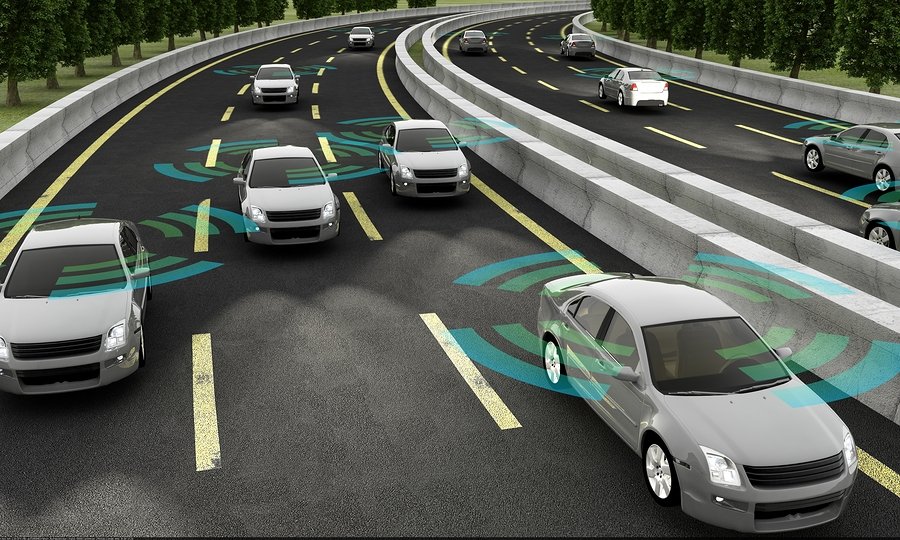
- Category:
- News
How close are we to self-driving cars?
David Philipson, Technical Specialist at Cenex, gives an overview on fully connected and autonomous vehicles and looks at when human drivers will no longer be necessary.
Connected and autonomous vehicles (CAV) is about more than just self-driving cars and the benefits go beyond the convenience of getting from A to B with minimal effort.
The technology is already applied in many modern cars on the roads today and reaching full autonomy could be sooner than we realise.
What is CAV?
To understand CAV better we can break it down into its two constituent technologies: connected and autonomous.
The ‘autonomous’ part is all about self-driving and what you have probably heard more about in the news; it involves a combination of sensors and cameras to allow the vehicle to drive on its own without any driver input and can be ranked by level of autonomy with level 0 (L0) at no automation up to level 5 (L5) with full automation and no driver whatsoever.
‘Connected’ vehicles means they can interact with and respond to surrounding stimulus, such as other vehicles, pedestrians, and infrastructure.
Together, they utilise a combination of rapidly advancing technologies, including cameras, LIDAR, RADAR, computers, and GPS to process information and generate an output in real time that enables vehicles to make autonomous decisions.
Where has CAV technology been used before?
At Cenex an early CAV project we were involved with was ACCRA (Autonomous and Connected vehicles for CleaneR Air), where a connected hybrid vehicle could automatically switch between petrol and electric power at low-emission zone boundaries.
Vehicles would use geographic location and air quality sensors to optimise battery charging in advance and activate zero-emission drive to meet pollution restrictions in real time.
Real world, fully autonomous vehicles are getting ever closer, and we have come a long way since early sci-fi concepts and the precursor of remote-controlled toy cars, but there is still a lot of technology to develop to achieve L5 automation.
Where are we now?
Progress is on a rapid trajectory; we have gone from L1 to L3 within a few years and most recently an Innovate UK and CCAV project achieved over 200 miles at L4 CAV on UK roads, which would not be possible a few years ago.
One of the key complexities is the processing power required to deal with all the operating systems at the same time.
If you think about driving yourself, there are a lot of inputs to process and act upon every single moment; the computers need to do the same thing and, importantly, make the right decisions.
Processing power capabilities roughly double every two years and with this advancement the technology can process inputs quicker and decide on the right outputs required for autonomy.
We can see L3 systems on the road at the moment (whereby the driver does not need to monitor the environment but can regain control at any time) for example a combination of adaptive cruise control, lane assist, and park assist.
Development is underway for highway and traffic jam chauffer, detecting speed changes in the surrounding cars and positioning the vehicle at safe distances, and probably the next major breakthrough will be to have the vehicle change lanes autonomously.
There are also L4 trials in the pipeline for freight vehicles, where a number of trucks will communicate and sit behind one another, in order to take advantage of aerodynamic benefits, as well as merging on and off roads and overtaking.
This will not only increase efficiency and save on fuel costs for operators but also improve safety for both freight and other road users.
At this year’s Cenex-CAM (Connected and Autonomous Mobility) event we can expect to see more demonstrations of existing and future technologies, including the impacts of 5G, on the exhibition stands and outside steering pad, as well as L3 and L4 technologies applied on the Ride and Drive area.
What does the future hold?
The next five to ten years will be all about learning and developing to reach L5 with the first vehicles commercially available by around 2030/35, and by 2050, the majority of road cars will be fully connected and autonomous.
The challenge now is to register and recognise all hazards, and secondary to that, understanding how CAV will work in a mixed vehicle parc – a combination of CAV and non-CAV which will be the case for the next 20-30 years.
Infrastructure and regulation are also key barriers to enable full connectivity and autonomy. This will require governments to work with the developers to find the right solutions that will enable these vehicles on roads.
With investment and advances in technology on a rapid trajectory, it won’t be long before society benefits from fully connected and autonomous vehicles.
Get in touch to talk about your CAV related projects or Cenex-CAM.